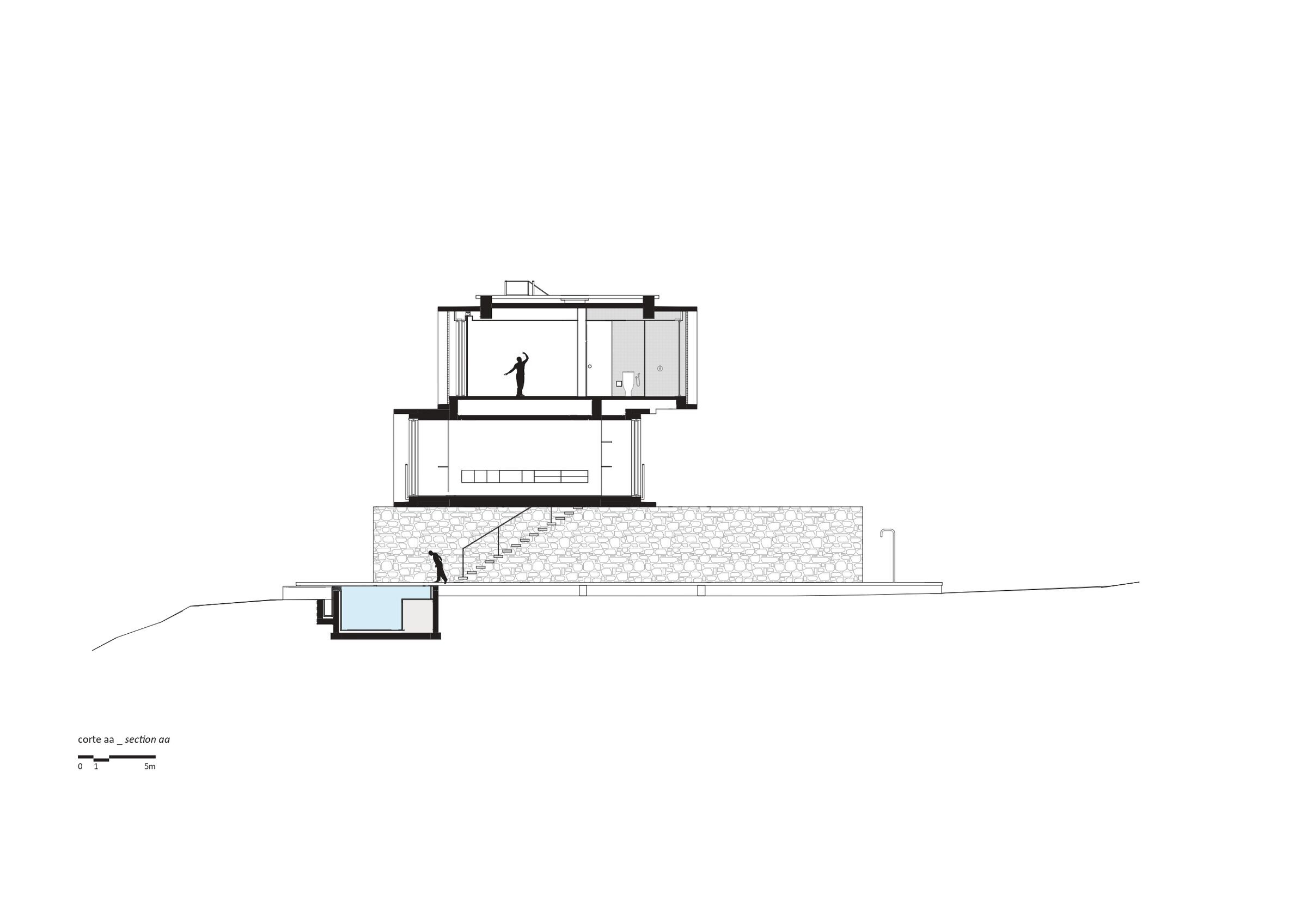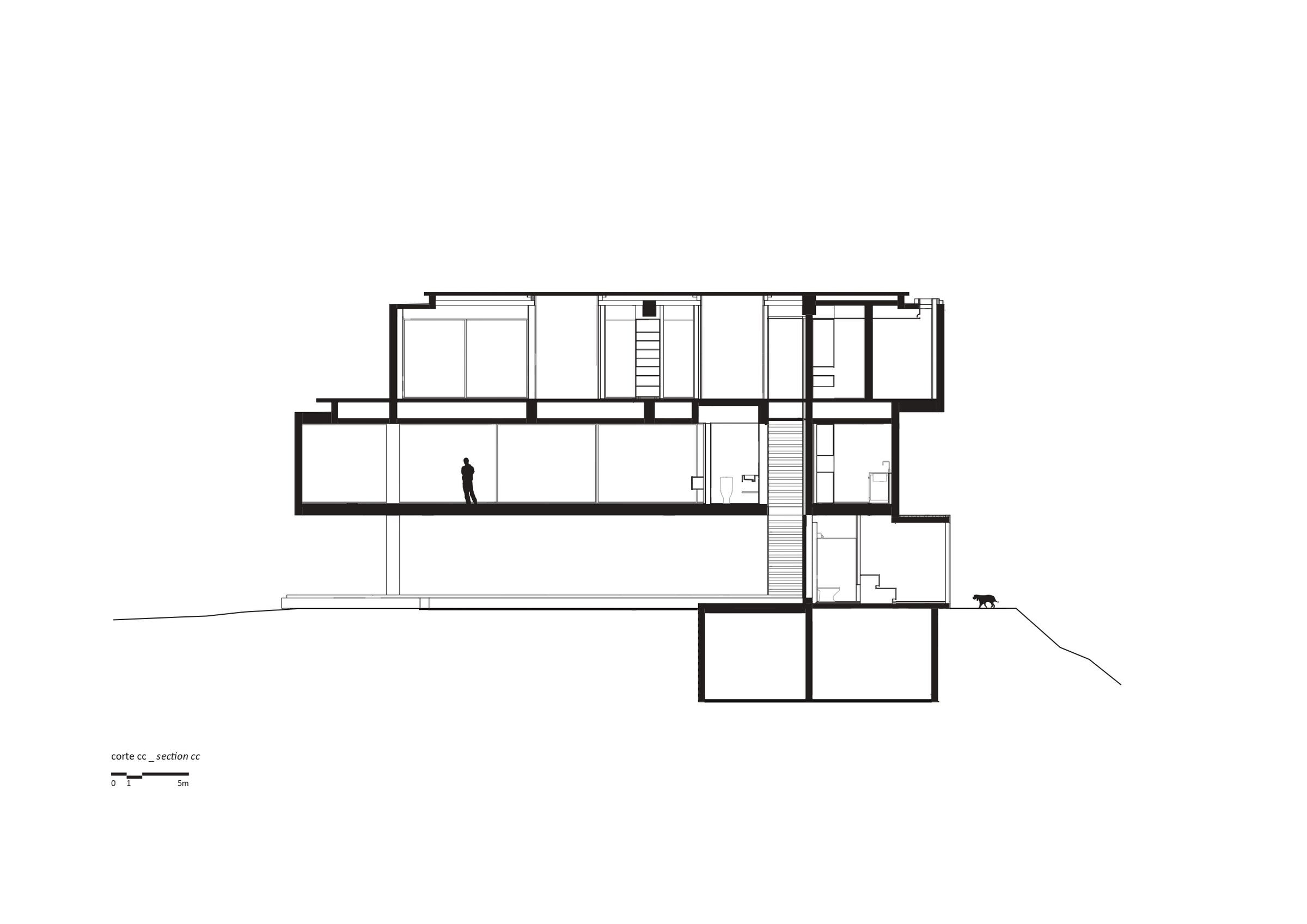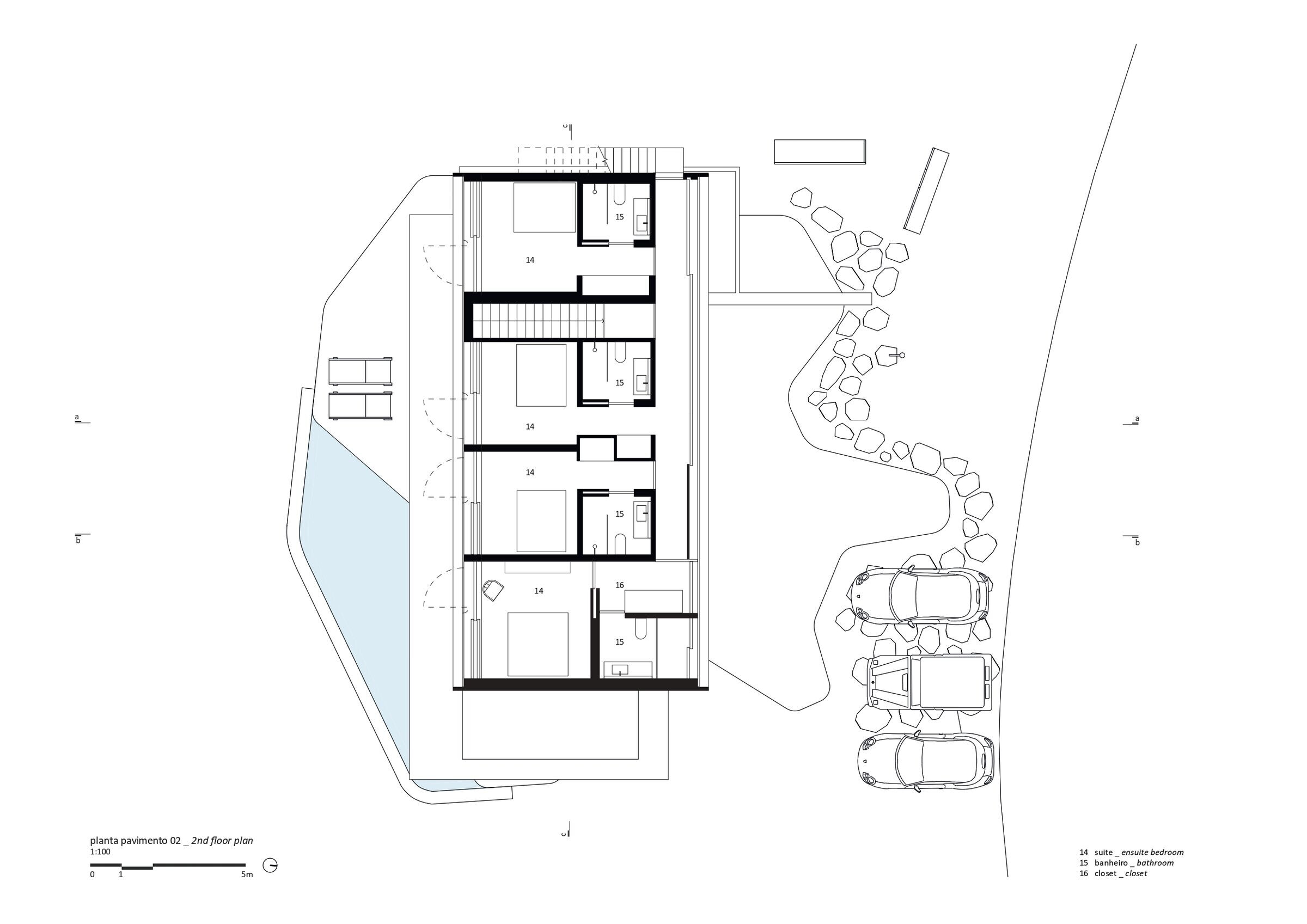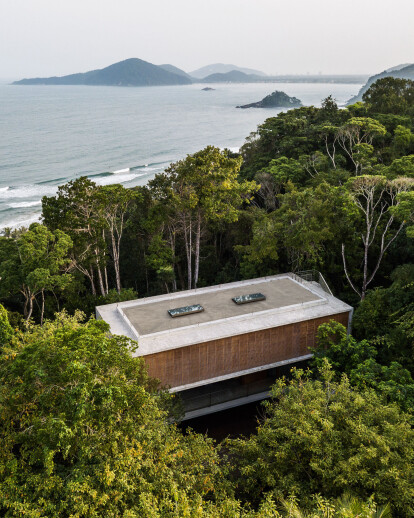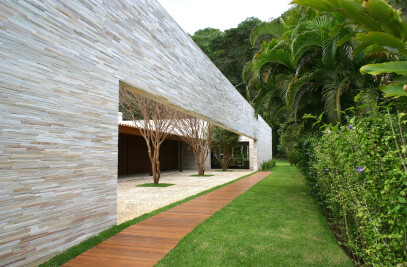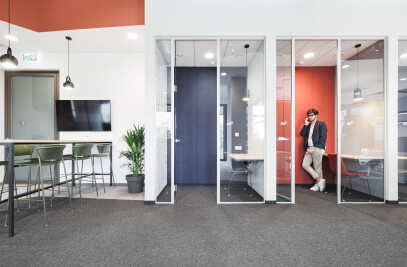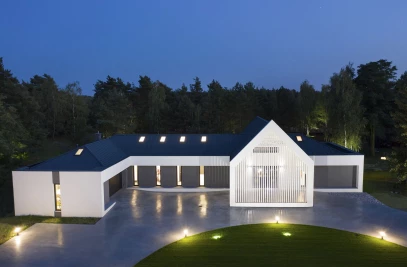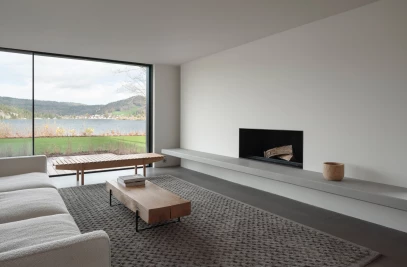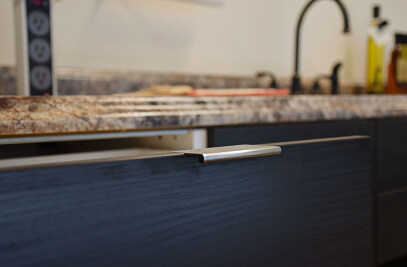Casa Azul is a case study on how to build amidst lush and protected nature, without damaging it. The land is in Serra do Guararu, a coastal region of Atlantic Forest in the state of São Paulo, just 500 meters away from Iporanga Beach.
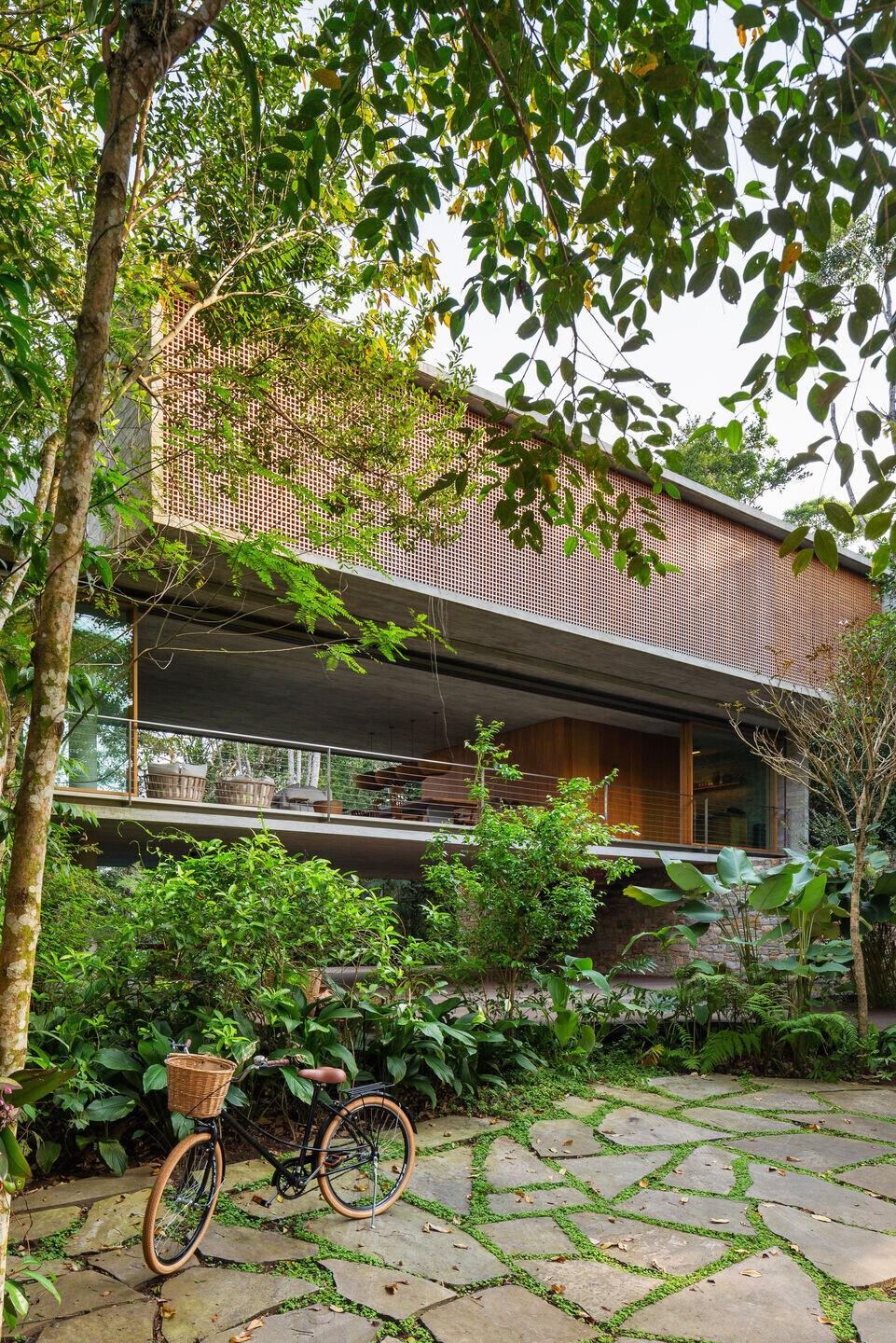

The project should be implemented within an area previously delimited by environmental agencies, keeping the rest of the land untouched. Architecture had to work within strict parameters to fully preserve the existing landscape and from the start, a two meters setback perimeter was defined around the projection of the house to protect the forest from construction activities.
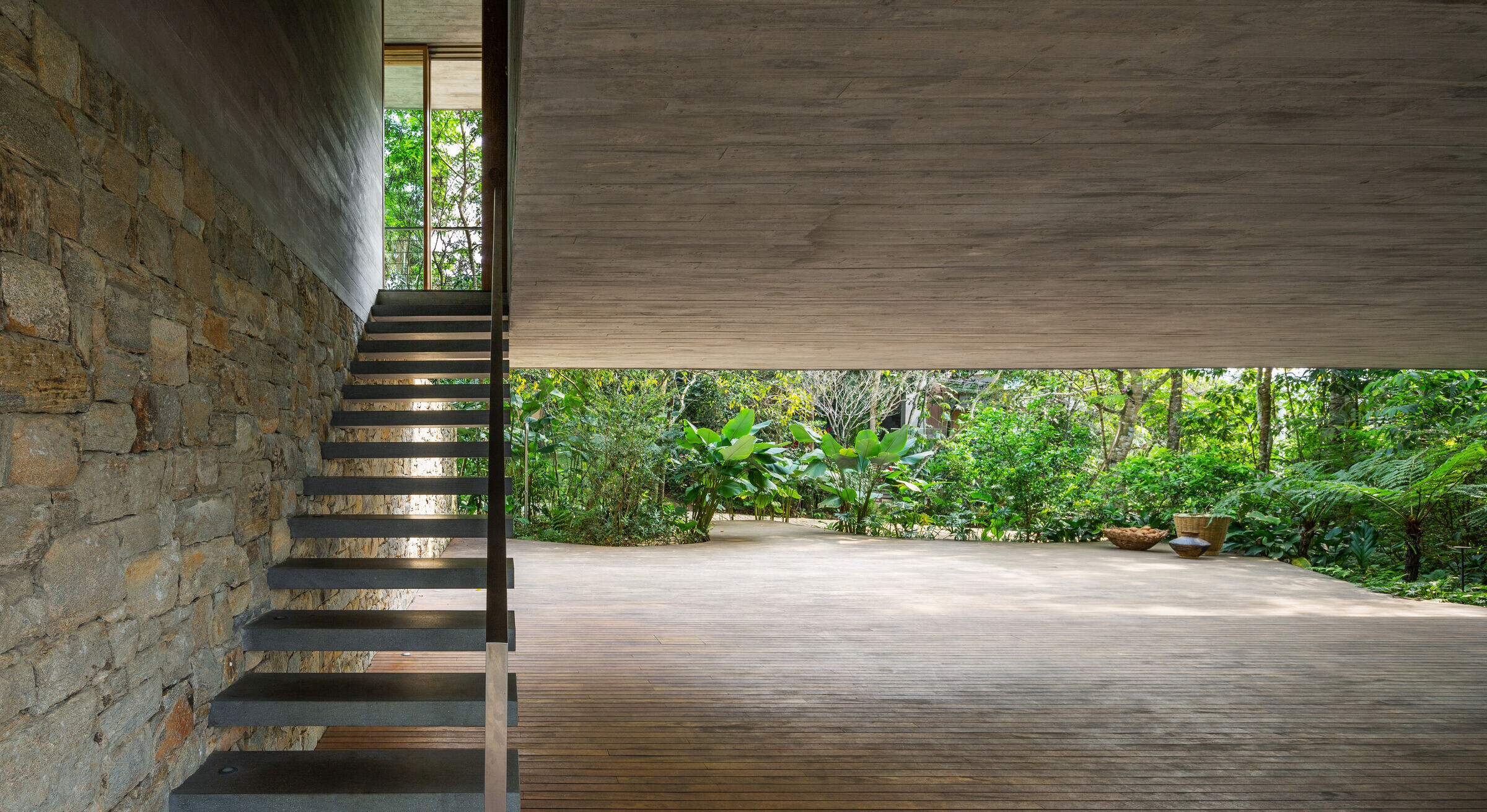
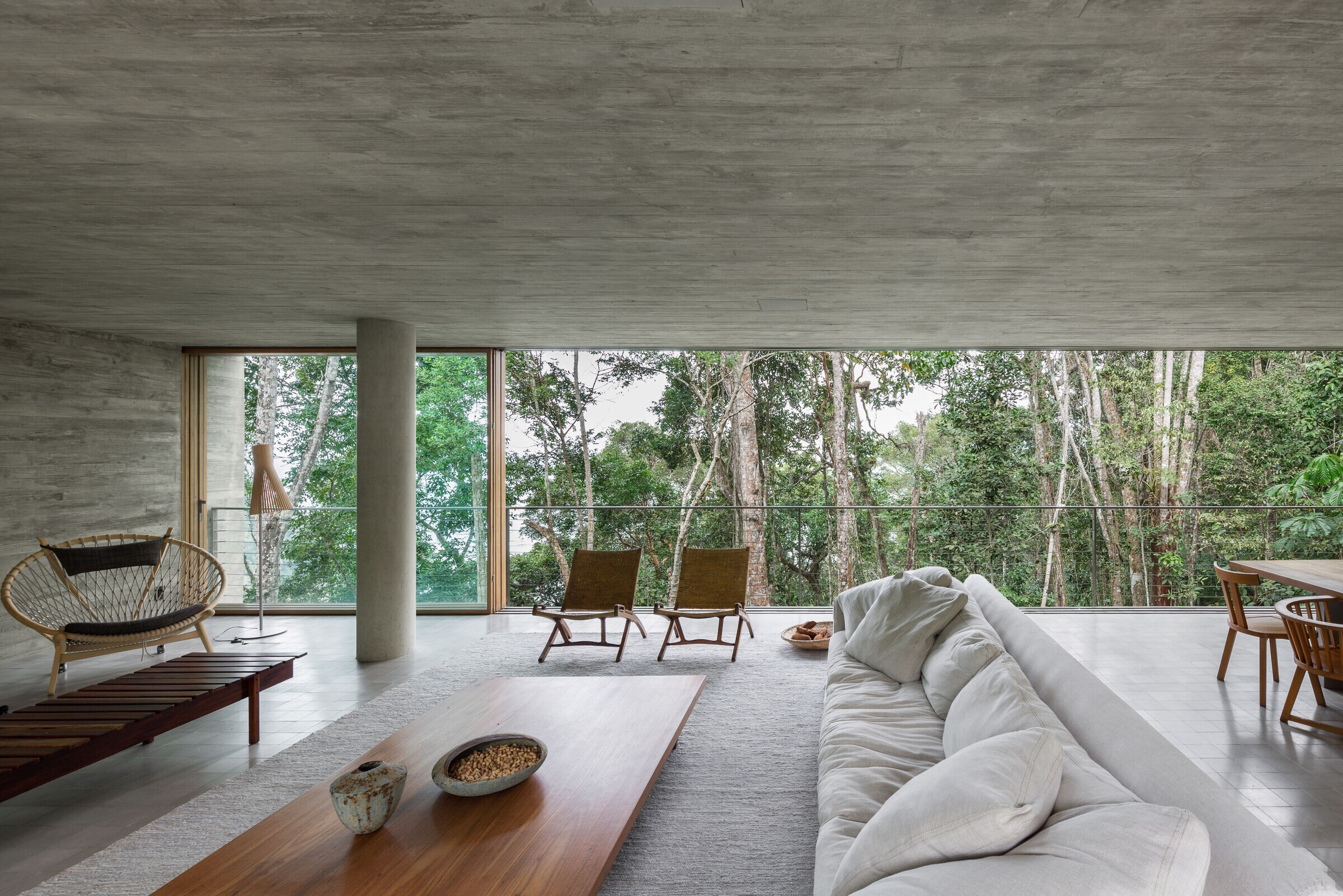
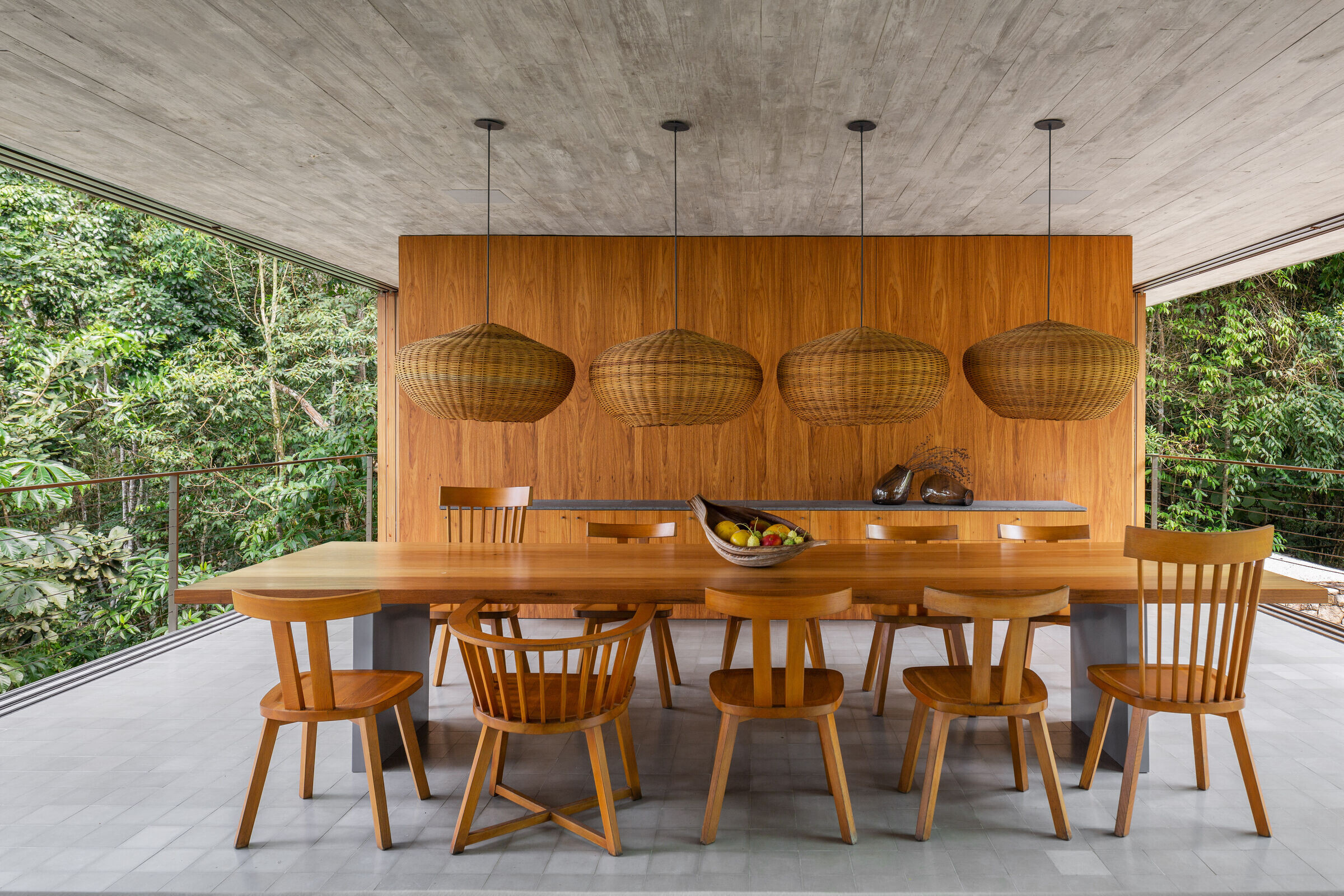
The house was conceived on pilotis, freeing a span of 15 meters long by 8 meters wide, which shades the main social and leisure area on the ground floor of the house. This wooden deck, slightly raised from the ground to protect the pavement from moisture, blends in with the surrounding vegetation, sinuously extending beyond the building's projection. Its abstract geometry, a tribute to the work of landscape architect Roberto Burle-Marx, intentionally contrasts with the rectangular volume that defines the house above and makes it possible to bring the vegetation either closer or further away, alternating the forms of interaction with the landscape.
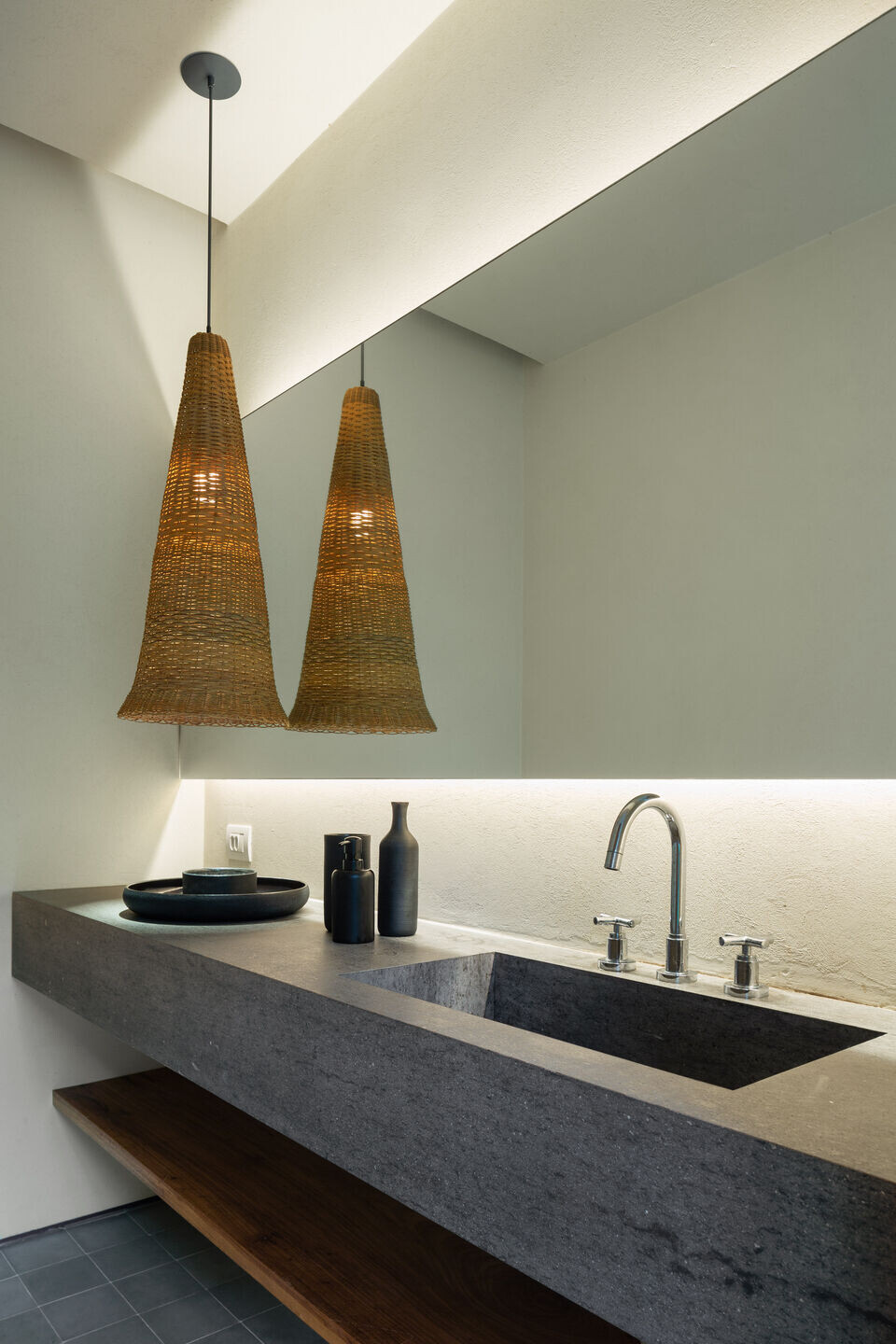

The pool, partially protected by the shade, stands between the deck and nature, giving contour to the landscaping created by Rodrigo Oliveira. By moving out of the projection of the house, the pool allows a more direct connection between the design of the house and the forest and topography that extend towards the sea. Perpendicular to the deck, a rustic stone wall separates the leisure area from the service areas and complements the pair of pillars that structure the span.


Over the ground floor, two stacked and mismatched volumes seem to float amidst the treetops. The elevation of the volumes in Casa Azul is not only intended to shade and protect, but also to achieve the surrounding view. The first concrete box frames nature with its glazed sides and allows for a view of the sea. When opened, the room turns into a large veranda that allows the gaze to completely traverse the architecture. The second-floor houses four rooms immersed in the treetops. In this volume, the longitudinal faces are closed by wooden muxarabis, which gently filter the light.

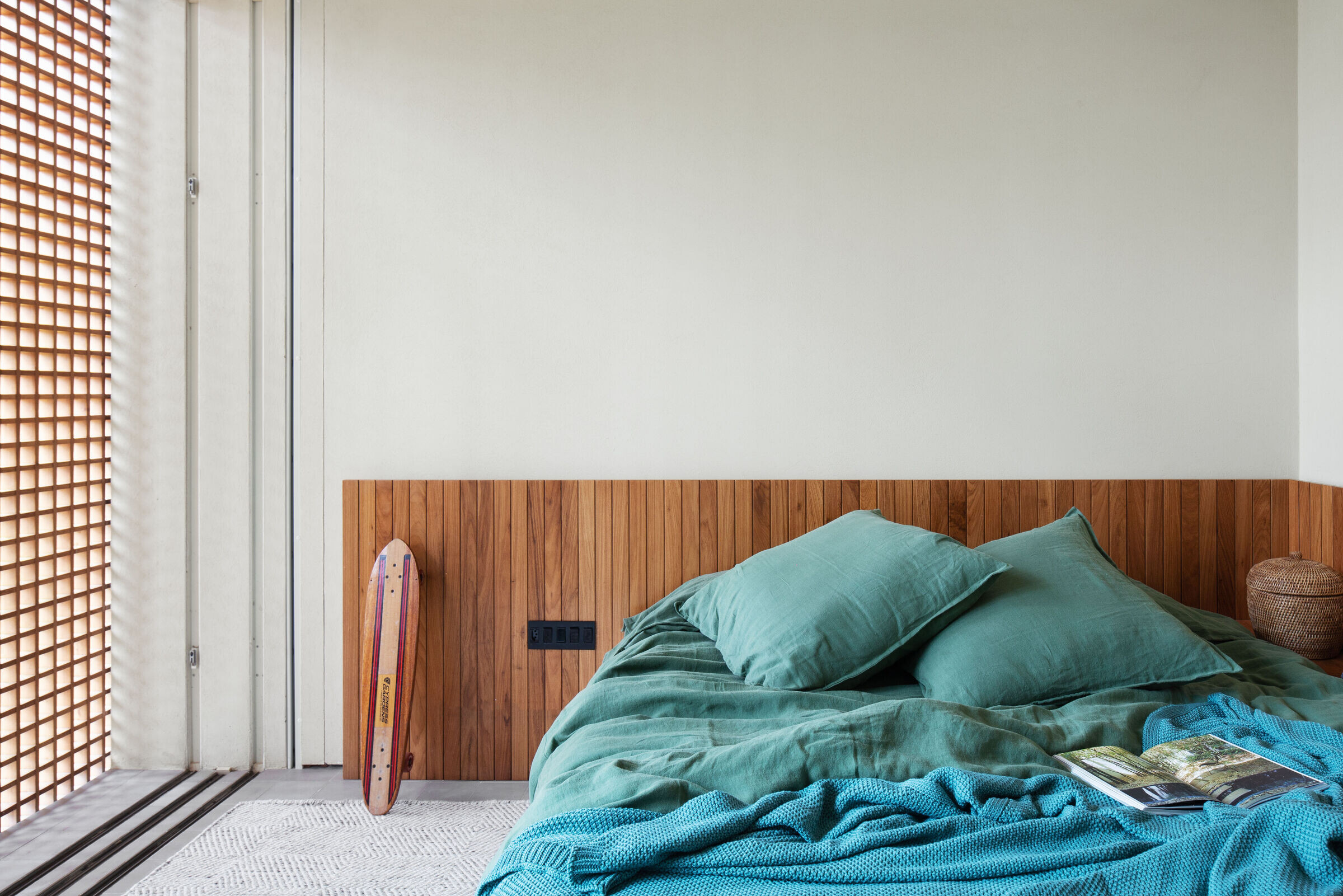
The wooden frames, fixed furniture, and decoration pieces, with natural textures and colors, bring the external nature into the house. The concrete volumes lend their tone to the floor tiles and stone countertops. On the ground floor, the floor of wide shards that leads to the entrance gradually breaks down and blends in with nature.
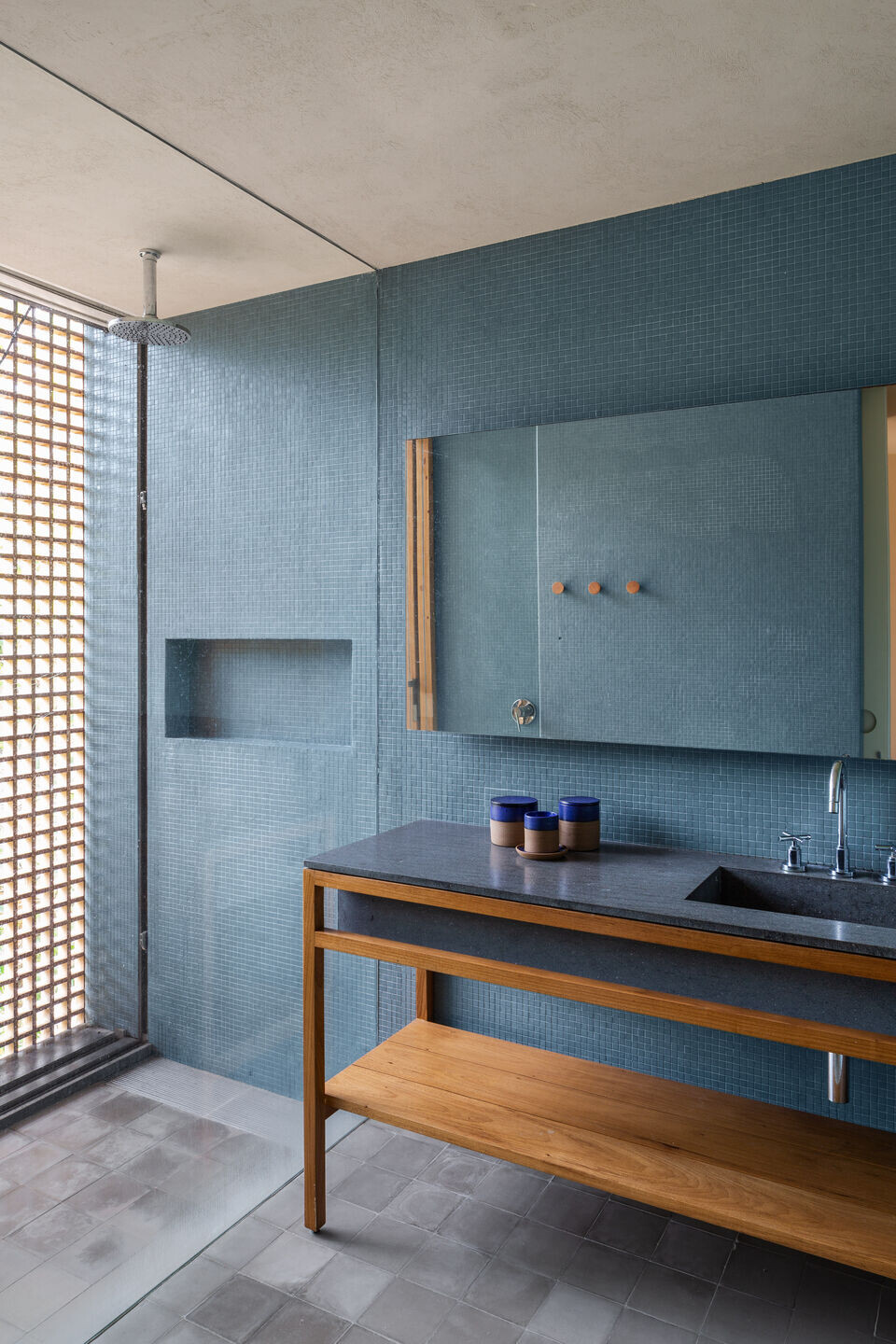

At Casa Azul, materiality is simple and discreet. The architecture lands smoothly on the ground, and the volumes open to the surroundings, diluting their presence. The game between the full and the empty makes the whole set light, and the house takes off. It is an architecture of a naturalist modernism that emphasizes the exuberance of the surrounding environment, becoming part of it.
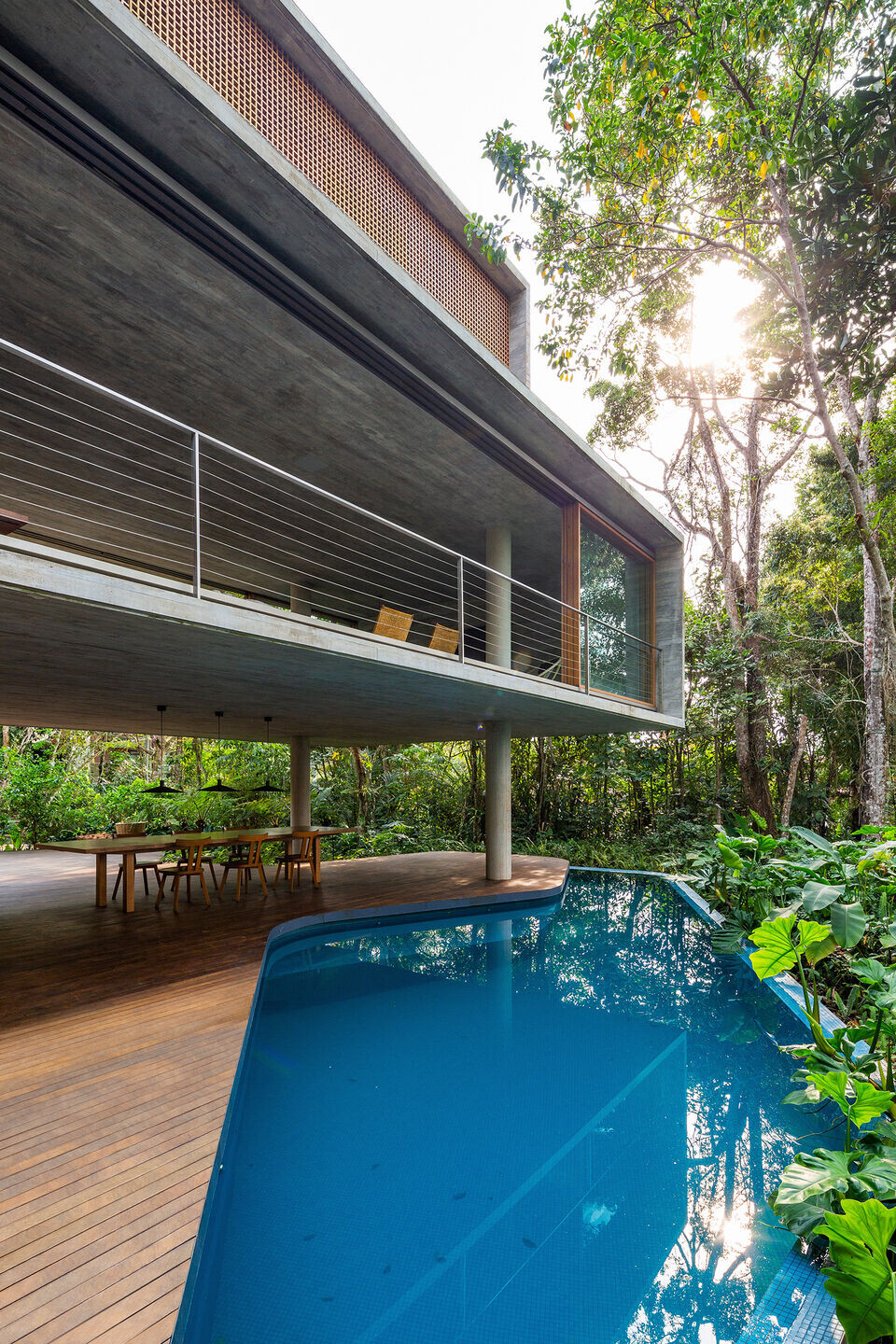
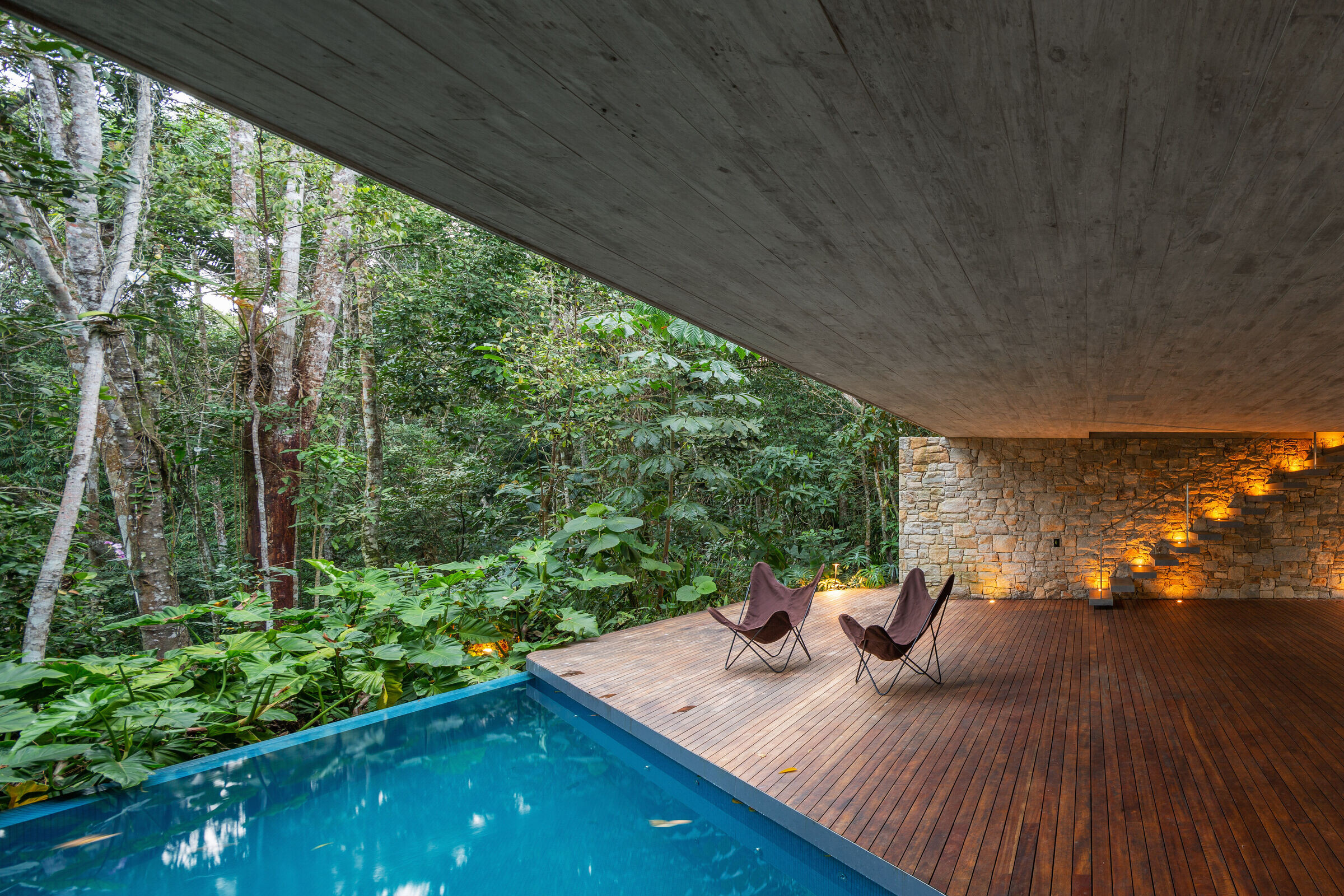
Team:
Architecture: studio mk27
Architect: Marcio Kogan
Co-architect: Samanta Cafardo
Interior Design: studio mk27 - Diana Radomysler
Project team: Carlos Costa, Mariana Simas, Mariana Ruzante, Oswaldo Pessano, Ricardo Ariza
Landscape Designer: Rodrigo Oliveira
Structure Engineer: Inner engenharia
Mep Engineer: DLameza Engenharia
Contractor: Lock engenharia
Photographer: André Scarpa

Materials used:
Window Frames: Mado
Light Fixtures: Lumini
Carpentry (doors, pannels and façade): Marvelar
Furniture Carpentry: Santana Toti
Marble: Arthur
Stones: Bellas Artes
Aluminium Window Frames: Kiko esquadrias
Locksmith: Artsteel
Wooden Deck: Core
